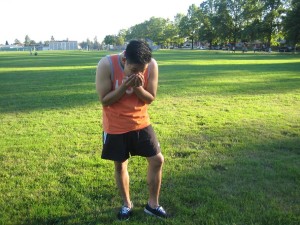Ammonia is a colorless gas with an overpowering odor that readily mixes with water. It is considered as a versatile chemical that is utilized for fertilizers, foods, refrigeration, cleaning solutions, fuel component and in the textile industry.
Poisoning can occur accidentally or intentionally if swallowed, inhaled or exposed to the skin. Remember that ammonia is a toxic substance present in different cleaning solutions, fertilizers and other industrial products.
What are the indications?
The typical indications of ammonia poisoning might vary for every case and ranges from minor to severe. Different bodily systems can be affected.
The usual signs of ammonia poisoning might include the following:
- Intense pain and burning sensation in the mouth and throat
- Skin burns and irritation
- Swollen lips and throat
- Brief loss of vision
Intense pain and burning sensation in the mouth and throat. - Severe stomach pain
- Bluish discoloration of the lips and under the fingernails
- Vomiting
- Rapid heart rate
- Low level of alertness
- Dizziness, poorly coordinated movement and restlessness
- Collapse
In case the fumes of ammonia were inhaled, the following can be observed:
- Wheezing and coughing
- Severe chest pain and tightness
- Difficulty breathing
- Reddened, watery and burning eyes
- Shock
Management of ammonia poisoning
Once an individual is suspected with ammonia poisoning, get in touch with emergency assistance or the poison control center right away.
- The individual should be transferred away from the site of exposure, ideally to an area with fresh air. Check if the individual is breathing and has a pulse rate.
- If the eye or skin was exposed to ammonia, wash thoroughly using water for up to 15 minutes
- It is not recommended to induce vomiting unless allowed to do so by the doctor.
- If ammonia was swallowed, provide the individual immediately with milk or water to drink if instructed by a healthcare professional. In case the individual has difficulty swallowing, vomiting or diminished level of alertness, do not provide anything orally.
Once the individual is taken to the nearest healthcare facility, try to bring the container or bottle of the compound along.
Upon arrival at the healthcare facility, the following might be started to manage the condition:
- Breathing support if needed
- Irrigation of the eyes and skin to eliminate any leftover traces of the compound
- Intravenous fluids
What is the outlook?
An individual can recover from the symptoms within 1-2 days with immediate treatment and support.
In case severe exposure occurred, it increases the risk for complications and lasting damage.
More Information / Disclaimer
The information posted on this page on ammonia poisoning is for learning purposes only. Learn to recognize the signs and how it is managed by taking a standard first aid course with Toronto First Aid.

